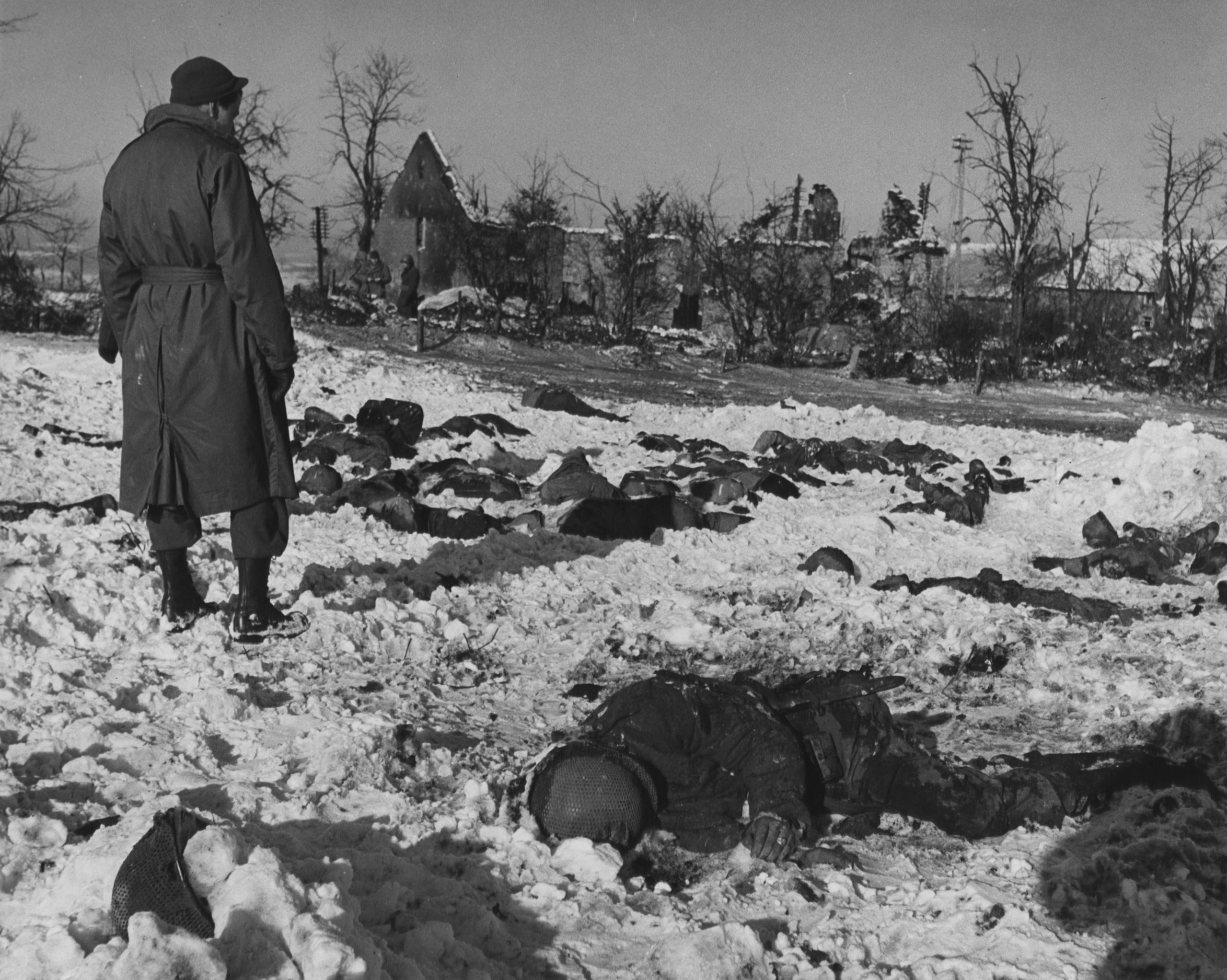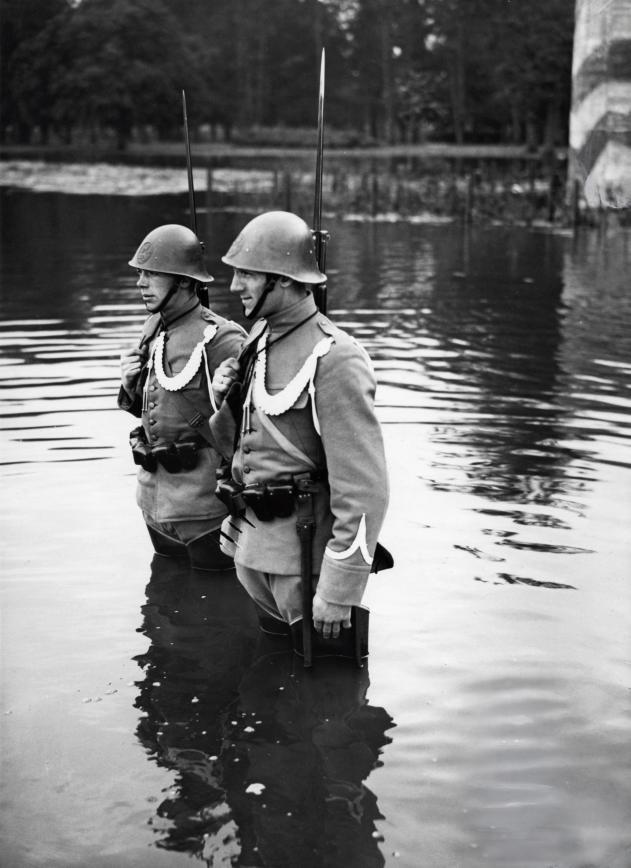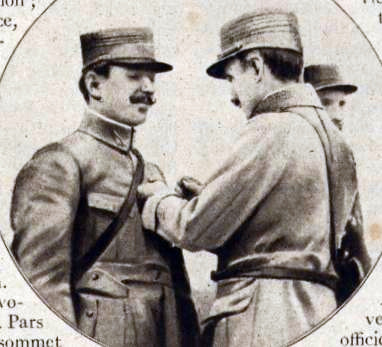|
Friedrich Christiansen
Friedrich Christiansen (12 December 1879 – 3 December 1972) was a German general who served as commander of the German ''Wehrmacht'' in the Netherlands in World War II, occupied Netherlands during World War II. Christiansen was a World War I flying ace and the only seaplane pilot to receive the ''Pour le Mérite''. He joined the Nazi Party in the interwar period, eventually rising to the rank of ''Korpsführer'' of the National Socialist Flyers Corps. After the German invasion of the Netherlands, Christiansen was appointed as the ''Wehrmachtbefehlshaber'' (Chief Military Commander) in the Netherlands. In response to attacks by the Dutch Resistance, he ordered reprisals against Dutch civilians such as the Putten raid. He was also responsible for the Dutch famine of 1944–1945 that resulted in the deaths of thousands of civilians after ordering an embargo on all food transports to the western Netherlands. After the war, Christiansen was arrested and convicted of war crimes. Ear ... [...More Info...] [...Related Items...] OR: [Wikipedia] [Google] [Baidu] |
Wehrmachtbefehlshaber
The () was the German chief military position in countries occupied by the Wehrmacht which were headed by a civilian administration. The main responsibilities of this position were military security in the area and command of the defense in case of attack or invasion. The also had a judicial function, as he served as judge in German military courts. He had no control over Army units, but was responsible for the housing of troops. In the occupied territories of the Soviet Union, the Wehrmachtsbefehlshaber was also responsible for securing the occupied territories, protecting transport links, and recording the crops. in the occupied areas Balkan Following the Invasion of Yugoslavia, the commander of the 12th Army was designated "Commander-in-Chief of the German troops in the Balkans", which was later renamed . Belgium and Northern France In Belgium and Northern France, control was originally given to a Military Administration. However, in July 1944, after the dismissal o ... [...More Info...] [...Related Items...] OR: [Wikipedia] [Google] [Baidu] |
World War II
World War II or the Second World War (1 September 1939 – 2 September 1945) was a World war, global conflict between two coalitions: the Allies of World War II, Allies and the Axis powers. World War II by country, Nearly all of the world's countries participated, with many nations mobilising all resources in pursuit of total war. Tanks in World War II, Tanks and Air warfare of World War II, aircraft played major roles, enabling the strategic bombing of cities and delivery of the Atomic bombings of Hiroshima and Nagasaki, first and only nuclear weapons ever used in war. World War II is the List of wars by death toll, deadliest conflict in history, causing World War II casualties, the death of 70 to 85 million people, more than half of whom were civilians. Millions died in genocides, including the Holocaust, and by massacres, starvation, and disease. After the Allied victory, Allied-occupied Germany, Germany, Allied-occupied Austria, Austria, Occupation of Japan, Japan, a ... [...More Info...] [...Related Items...] OR: [Wikipedia] [Google] [Baidu] |
Zeebrugge
Zeebrugge (; from , meaning "Bruges-on-Sea"; , ) is a village on the coast of Belgium and a subdivision of Bruges, for which it is the modern port. Zeebrugge serves as both the international port of Bruges-Zeebrugge and a seafront resort with hotels, cafés, a marina and a beach. Location Zeebrugge is located on the coast of the North Sea. Its central location on the Belgian coast, short distance to Great Britain and close vicinity to densely populated industrialised cities make it a crossroads for traffic from all directions. An expressway to Bruges connects Zeebrugge to the European motorway system; one can also get to and from Zeebrugge by train or tram. A 12 km canal links the port to the centre of Bruges. It is Belgium's most important fishing port and the wholesale fish market located there is one of the largest in Europe. Aside from being a passenger terminal with ferries to the United Kingdom, the harbour serves as the central port for Europe's automotive ind ... [...More Info...] [...Related Items...] OR: [Wikipedia] [Google] [Baidu] |
Preussen (ship)
''Preussen'' (''Preußen'' in German and as written on the vessel) (''PROY-sin'') was a German steel-hulled, five-masted, ship-rigged sailing ship built in 1902 for the F. Laeisz shipping company and named after the German state and kingdom of Prussia. She was the world's only ship of this class with five masts, carrying six square sails on each mast. Until the 2000 launch of ''Royal Clipper'', a sail cruise liner, she was the only five-masted full-rigged ship ever built. History ''Preussen'' was built as hull-number 179 at the Joh. C. Tecklenborg ship yard in Geestemünde according to the plans of chief designer Dr.-Ing. h. c. Georg Wilhelm Claussen, launched and christened on 7 May 1902. The ship was commissioned on 31 July 1902 and left the harbour of Bremerhaven the same day on her maiden voyage to Iquique under the command of Capt. Boye Richard Petersen who assisted naval architect Claussen in his plans. The basic idea of building such a ship is said to come from famous ... [...More Info...] [...Related Items...] OR: [Wikipedia] [Google] [Baidu] |
Province Of Schleswig-Holstein
The Province of Schleswig-Holstein ( ) was a province of the Kingdom of Prussia (from 1868 to 1918) and the Free State of Prussia (from 1918 to 1946). History It was created from the Duchies of Schleswig and Holstein, which had been conquered by Prussia and the Austrian Empire from Denmark in the Second War of Schleswig in 1864. Following the Austro-Prussian War in 1866, which ended in Austrian defeat, Schleswig and Holstein were annexed by decree of William I on 12 January 1867. The province was created in 1868, and it incorporated the Duchy of Lauenburg from 1876 onward. Following the defeat of Imperial Germany in World War I, the Allied powers organised two plebiscites in Northern and Central Schleswig on 10 February and 14 March 1920, respectively. In Northern Schleswig, 75% voted for reunification with Denmark and 25% for staying with Germany. In Central Schleswig, the situation was reversed, with 80% voting for Germany and 20% for Denmark. No vote ever took place in ... [...More Info...] [...Related Items...] OR: [Wikipedia] [Google] [Baidu] |
War Crimes
A war crime is a violation of the laws of war that gives rise to individual criminal responsibility for actions by combatants in action, such as intentionally killing civilians or intentionally killing prisoners of war, torture, taking hostages, unnecessarily destroying civilian property, deception by perfidy, wartime sexual violence, pillaging, and for any individual that is part of the command structure who orders any attempt to committing mass killings (including genocide or ethnic cleansing), the granting of no quarter despite surrender, the conscription of children in the military, and flouting the legal distinctions of proportionality and military necessity. The formal concept of war crimes emerged from the codification of the customary international law that applied to warfare between sovereign states, such as the Lieber Code (1863) of the Union Army in the American Civil War and the Hague Conventions of 1899 and 1907 for international war. In the afterm ... [...More Info...] [...Related Items...] OR: [Wikipedia] [Google] [Baidu] |
Dutch Famine Of 1944–1945
The Dutch famine of 1944–1945, also known as the Hunger Winter (from Dutch language, Dutch ''Hongerwinter''), was a famine that took place in the History of the Netherlands (1939–1945), German-occupied Netherlands, especially in the densely populated western provinces north of the great rivers, during the relatively harsh winter of 1944–1945, near the end of World War II. A German blockade cut off food and fuel shipments from farm towns. Some 4.5 million were affected and survived thanks to soup kitchens. Loe de Jong (1914–2005), author of ''The Kingdom of the Netherlands During World War II'', estimated at least 22,000 deaths occurred due to the famine. Another author estimated 18,000 deaths from the famine. Most of the victims were reportedly elderly men. The famine was alleviated first by "Swedish bread" flour shipped in from Sweden to Dutch harbours, and subsequently by the airlift of food by the Royal Air Force, the Royal Canadian Air Force, and the United ... [...More Info...] [...Related Items...] OR: [Wikipedia] [Google] [Baidu] |
Putten Raid
The Putten raid (Dutch: ''Razzia van Putten'') was a civilian raid conducted by Nazi Germany in occupied Netherlands during the Second World War. On 1 October 1944, a total of 602 men – almost the entire male population of the village – were taken from Putten, in the central Netherlands, and deported to various concentration camps inside Germany. Only 48 returned at the end of the war. The raid was carried out as a reprisal for a Dutch resistance attack on a vehicle carrying personnel from the ''Wehrmacht''. Background On the night of 30 September-1 October 1944, a car carrying two officers and two corporals of the German Army was ambushed by members of the Dutch resistance near the Oldenallerbrug bridge between Putten and Nijkerk. In the attack, a resistance fighter named Frans Slotboom was wounded; he later died. One German officer, Lieutenant Otto Sommer, was also injured, and escaped to a nearby farmhouse to raise the alarm; he died the following day. The two German corpo ... [...More Info...] [...Related Items...] OR: [Wikipedia] [Google] [Baidu] |
Dutch Resistance
The Dutch resistance () to the History of the Netherlands (1939–1945), German occupation of the Netherlands during World War II can be mainly characterized as non-violent. The primary organizers were the Communist Party of the Netherlands, Communist Party, churches, and independent groups. Over 300,000 people were hidden from German authorities in the autumn of 1944 by 60,000 to 200,000 illegal landlords and caretakers. These activities were tolerated knowingly by some one million people, including a few individuals among German occupiers and military.L. de Jong: Het Koninkrijk der Nederlanden in de Tweede Wereldoorlog. The Dutch resistance developed relatively slowly, but the February strike of 1941 (which involved random police harassment and the deportation of over 400 Jews) greatly stimulated resistance. The first to organize themselves were the Dutch communists, who set up a cell-system immediately. Some other very amateurish groups also emerged, notably, De Geuzen, set ... [...More Info...] [...Related Items...] OR: [Wikipedia] [Google] [Baidu] |
German Invasion Of The Netherlands
The German invasion of the Netherlands (), otherwise known as the Battle of the Netherlands (), was a military campaign, part of Case Yellow (), the Nazi German invasion of the Low Countries (Belgium, Luxembourg, and the Netherlands) and France during World War II. The battle lasted from 10 May 1940 until the surrender of the main Dutch forces on 14 May. Dutch troops in the province of Zealand continued to resist the Wehrmacht until 17 May, when Germany completed its occupation of the whole country. The invasion of the Netherlands saw some of the earliest mass paratroop drops, to occupy tactical points and assist the advance of ground troops. The German Luftwaffe used paratroopers in the capture of several airfields in the vicinity of Rotterdam and The Hague, helping to quickly overrun the country and immobilise Dutch forces. After the devastating Nazi bombing of Rotterdam by the Luftwaffe on 14 May, the Germans threatened to bomb other Dutch cities if the Dutch forces refu ... [...More Info...] [...Related Items...] OR: [Wikipedia] [Google] [Baidu] |
Flying Ace
A flying ace, fighter ace or air ace is a military aviation, military aviator credited with shooting down a certain minimum number of enemy aircraft during aerial combat; the exact number of aerial victories required to officially qualify as an ace varies, but is usually considered to be five or more. The concept of the "Ace (military), ace" emerged in 1915 during World War I, at the same time as aerial dogfighting. It was a propaganda term intended to provide the home front with a cult of the hero in what was otherwise a Attrition warfare, war of attrition. The individual actions of aces were widely reported and the image was disseminated of the ace as a chivalrous knight reminiscent of a bygone era. For a brief early period when air-to-air combat was just being invented, the exceptionally skilled pilot could shape the battle in the skies. For most of the war, however, the image of the ace had little to do with the reality of air warfare, in which fighters fought in formation an ... [...More Info...] [...Related Items...] OR: [Wikipedia] [Google] [Baidu] |







